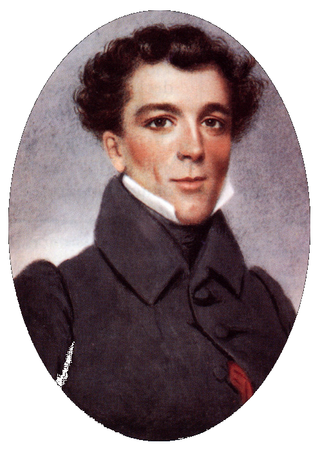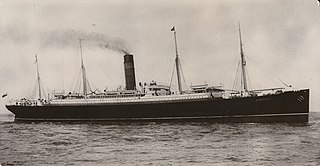
Captain Robert Bennet Forbes, was an American sea captain, China merchant and ship owner. He was active in ship construction, maritime safety, the opium trade, and charitable activities, including food aid to Ireland, which became known as America's first major disaster relief effort.

Donald McKay was a Canadian-born American designer and builder of sailing ships, famed for his record-setting extreme clippers.

Keying was a three-masted, 800-ton Fuzhou Chinese trading junk which sailed from China around the Cape of Good Hope to the United States and Britain between 1846 and 1848. Her voyage was significant as it was one of the earliest instances of a Chinese sailing vessel making a transoceanic journey to the Western world. It served as a cultural exchange and offered Western audiences a glimpse into Chinese maritime traditions and craftsmanship.

Joaquim Marques Lisboa, Marquis of Tamandaré was a Brazilian admiral of the Imperial Navy of Brazil. He dedicated his life to the Brazilian Navy, including a life-long membership in Brazil's Military and Justice Council, then Supreme Military Court, from its inception until 1891, when the Republican Government granted him leave.
Sir Charles Hardy Islands is in the reef of the same name adjacent to Pollard Channel & Blackwood Channel about 40 km east of Cape Grenville off Cape York Peninsula.

SS Adriatic was the first of two White Star Line ocean liners to carry the name Adriatic. The White Star Line's first four steamships of the Oceanic-class, the met with great success in the trans-Atlantic market, and the line decided to build two more. The first of these was the SS Adriatic, which was built by Harland and Wolff and launched on 17 October 1871; the second was the SS Celtic.

Carpathia was a Cunard Line transatlantic passenger steamship built by Swan Hunter & Wigham Richardson in their shipyard in Wallsend, England.

John Pascoe Grenfell was a British officer of the Empire of Brazil. He spent most of his service in South America campaigns, initially under the leadership of Lord Cochrane and then Commodore Norton. He was the nephew of British politician Pascoe Grenfell and grandfather to General Sir John Grenfell Maxwell. In Brazil, he rose to the rank of admiral and for his achievements was made a knight grand cross of the Imperial Order of the Rose and a knight of the Imperial Order of the Southern Cross.

The SSCity of Boston was a British iron-hulled single-screw passenger steamship of the Inman Line which disappeared in the North Atlantic Ocean en route from Halifax, Nova Scotia, to Liverpool in January 1870.

Packet boats were medium-sized boats designed for domestic mail, passenger, and freight transportation in European countries and in North American rivers and canals, some of them steam driven. They were used extensively during the 18th and 19th centuries and featured regularly scheduled service. Steam driven packets were used extensively in the United States in the 19th century on the Mississippi and Missouri rivers, supplying and bringing personnel to forts and trading posts.
The Eleanor Lancaster was a 3-masted barque built at Maryport in 1839. Launched in 1840, and initially registered in Liverpool, it was operated by David Laidman (named after his wife, Eleanor Ann Hannah née Lancaster, with Captain P.Cowley as captain. In 1845, the ship was re-registered in London and was operated by Soutter & Co, with Captain Francis Lodge in command.
Victory was built by Fenwick & Co, Sunderland in 1847 and owned by Willis, Gunn and Co and later owned by Wilson and Cook. She was a 578- or 579-ton barque that brought some of the first immigrants from England to Dunedin in July 1848. She also called at Wellington, New Zealand, in August 1848. There was an advertisement that gave her weight as 700 tons, but, given that her captain in 1851 was Mullens, it was unlikely to be another ship.

The New Zealand Company was a 19th-century English company that played a key role in the colonisation of New Zealand. The company was formed to carry out the principles of systematic colonisation devised by Edward Gibbon Wakefield, who envisaged the creation of a new-model English society in the southern hemisphere. Under Wakefield's model, the colony would attract capitalists who would then have a ready supply of labour—migrant labourers who could not initially afford to be property owners, but who would have the expectation of one day buying land with their savings.
Cumberland was launched at Holyhead in 1826 as a steam packet. In 1839 she underwent conversion to a sail barque. In 1846 Cumberland transported Parkhurst apprentices to the Swan River Colony. She foundered on 23 October 1849 while carrying rice from Bally, Netherlands East Indies, to Hong Kong.
SS Sardinia was a passenger-cargo ship which caught fire off Malta's Grand Harbour on 25 November 1908, resulting in at least 118 deaths. The ship was carrying Moroccan pilgrims on the way to Mecca. It is believed that a cooking fire on deck accidentally ignited nitrate in one of the ship's cargo holds, resulting in a number of explosions and causing the ship to run aground.

The Coquette was a 19th-century yacht and pilot boat, built in 1845 by Louis Winde, at the Winde & Clinkard shipyard in Chelsea, Massachusetts for yachtsmen James A. Perkins. Her design was based on a model by shipbuilder Dennison J. Lawlor. The Coquette was a good example of an early American yacht with a clipper bow. As a yacht, she won the attention for outsailing the larger New York yacht Maria at the second New York Yacht Club regatta in 1846. Perkins sold the Coquette to the Boston Pilots' Association for pilot service in 1848. She continued as a pilot boat until 1867 when she was sold as a Blackbirder to be used on the African coast.

Dom Afonso was a steam frigate that served the Imperial Brazilian Navy, being the first steamship to serve in this navy. It was built in England under the supervision of chief of squad John Pascoe Grenfell and was named Dom Afonso in honor of Afonso, Prince Imperial of Brazil, son of emperor Pedro II of Brazil and empress Teresa Cristina.

Caleb Grimshaw was a sailing vessel built in 1848 for the Atlantic packet trade. The ship caught fire and sank in 1849, with the death of 90-101 people.
















